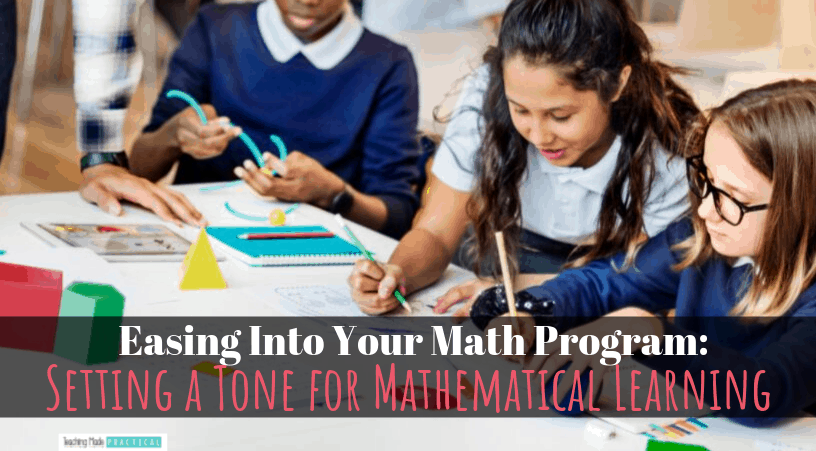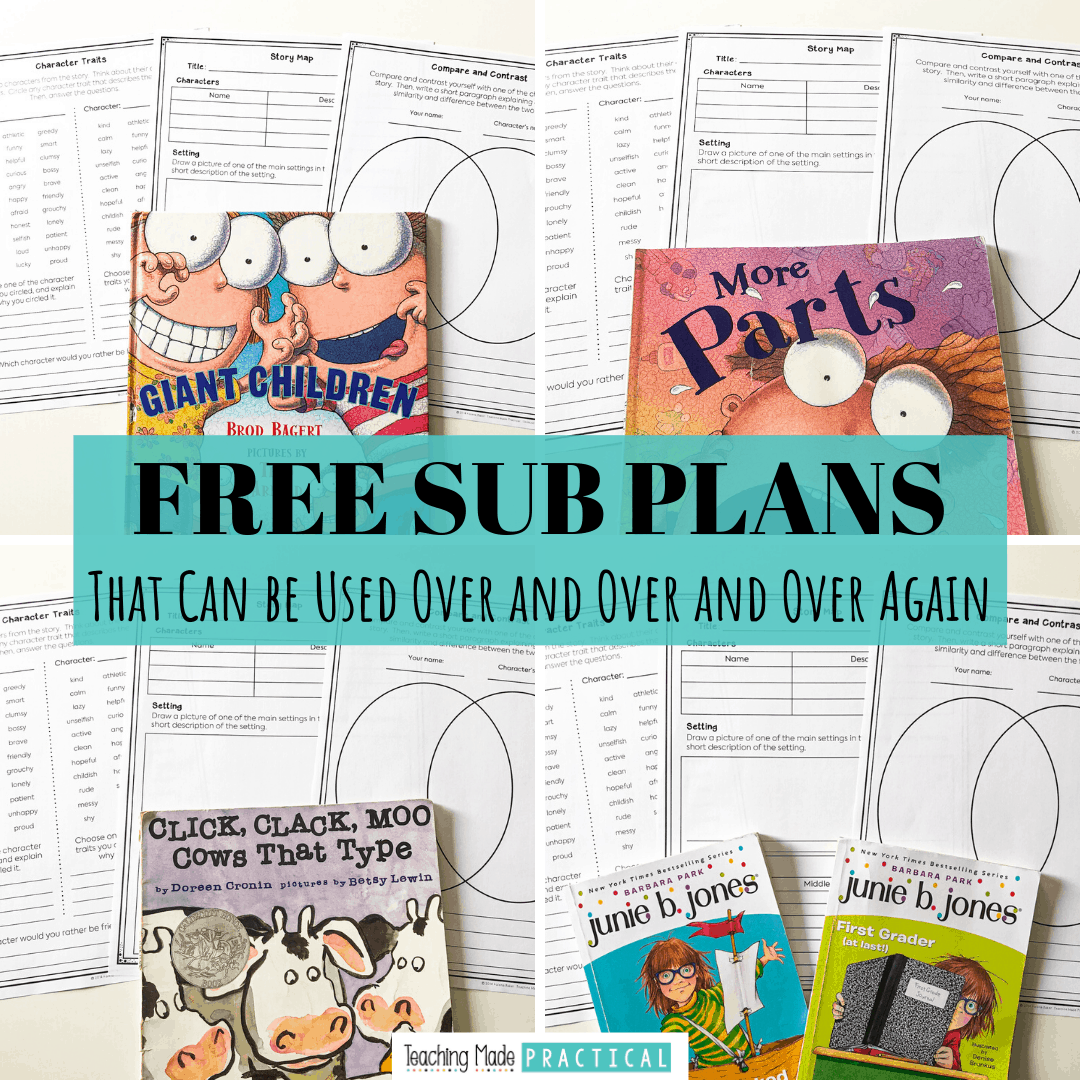
Written by Guest Blogger Kerry Heino
Starting your year off on the right note is always paramount to most teachers. We want students to get a feel for what the year will be like within those first few days. We want to make sure that our students understand what is expected of them, but we also want to instill a joy for learning. Since we know that “math phobia” is a things for many students, we want to ensure that our students get excited about the year’s math program and what we will be offering, while still covering the necessary curriculum.
This contains affiliate links. For more information, see my disclosure policy here.
So How Do We Do This?
There are many ways that teachers can begin their math programs, and I am by no means an expert. However, having gained some knowledge on teaching math in a different way over the last few years, I’ve come to change my own math program, with great results, and students who are actually excited to delve into the various math topics.
Introducing the Topic - A Diagnostic
When introducing a new topic to students, it’s important to see where their starting points are. I like to give my students Diagnostic Assessments for each new topic we will be exploring. I let them know that there is no pressure, no marks, but rather this information guides me, as their teacher, to know what things they already know, and where we need to begin.
Diagnostics can be found online, but I usually end up creating my own, based off of what the curriculum is at their grade level, but also including questions from previous years to see what they’ve retained, as well as a few challenging questions to see if any students are above where they need to be.
I mark these diagnostics, making notes about who is working at grade level, who is working below grade level, and who may be able to work above grade level. I don’t return these to the students, but rather I keep them in personal files, that I can go back to when need be, especially if meeting with parents.
Introducing the Topic - Day 1
I used to teach mathematics in a very structured way. On day one I would lay out the topic, introduce the first lesson, “teach”, and then give my students practice questions. I’m learning to get away from this approach, as not a lot of the student voice was present when I taught in that fashion. I am learning that students need to have a chance to explore the topic, with little to no “teaching” from me. I understand now that true learning needs to have the students at the forefront. I’m just the facilitator.
One resource that is really helping me to change my teaching methods is Marian Small's “Open Questions for the Three-Part Lesson."
These resources cover all of the major strands in mathematics and provide you with multiple grade levels, so you can provide questions that are easier or more challenging.
Essentially, this resource gives the teacher a chance to provide students with an open-ended question, on a certain topic, and allow students to explore the topic. I take pictures of the questions, put them up on my SmartBoard, and allow students to work with their math partners to solve the problem. Many of the questions allow for hands-on exploration.
After giving students much time to explore, while I am circulating around the room, I allow students to present their ideas to the rest of the class. As students present, I am guiding the conversation, so that a formal lesson may not be occurring, but the learning and understanding is happening. When students learn from their peers it is very worthwhile and often allows students ownership that they may not take when the teacher is telling them how to do things.
Math Partners
While students like to work with their friends, having a like-minded math partner is essential for learning. You want to make sure that students are comfortable, but also that they are able to contribute at their own personal level. I spend the first few months of school trying to perfect this arrangement, so don’t be afraid to change things up if you notice that it’s not working.
Playing Games
Teachers often feel overwhelmed when it comes to games, because we often feel like we need to go out and make up all of these games, but that’s not always true. I buy decks of cards at the dollar store, as well as soap containers to keep them in. I find that once students are interested in card games, they will actually want to play them, even when they have “free time”. This is further reinforcement of these mathematical skills, such as number recognition, mathematical operations, etc. When searching for relevant board games, you can visit your local thrift stores to purchase these.
Also keep in mind that games can be altered easily to fit your specific topic. For example, you can create Place Value Yahtzee cards that can be used instead of the normal cards, for use when dealing with large numbers or even decimals.
You might also like these free multiples mazes or these 8 games you can play with fraction cards.
Read a "Math Story"
This is something new to me, as a junior teacher, but I’m finding that students respond well to this. There are many cool resources to use for this. Students love to be read to and there are many short stories that use math as their basis.
I read the story and then pose a problem that is related to the story for students to solve with their math partners.
Here are some resources that are helpful:
So How Do I Get Those Marks That I Need?
And here is the conundrum all teachers feel. We do have to have some concrete data when it comes to our math program. Assessment does have to happen. However, I’ve learned that having unit tests is not always necessary. Teach a topic and allow students time to really delve into it. Have them practice a few questions on their own. Work with students who are struggling. And then, when you feel ready to move on, choose a few real-world questions to assess them on. This makes for less formal marking for you, and more focus on true understanding of a topic, rather than on performance of a task.
This does take organization on the part of the teacher though. Make up your observation checklists or rubrics ahead of time. What are you looking for? As you’re circulating around the room, make notes on what you’re noticing. Who gets it? Who needs more help? Who needs assistance communicating their thinking? Who can do computations, but not apply those to real-world situations?
When deciding to change your math program, there is a lot to think about, but once you get started, you’ll find that you get to know more about your students, and their abilities by teaching this way. And if changing everything seems too daunting, then start small. Try one thing first and build on from there. Just always remember that you want your students to get excited about math, to feel like they can all “do” math, and you being the facilitator of that is mighty fulfilling!
Kerry Heino
Thunder Bay, Ontario
You might also like:
Teaching Rounding so Students Actually Understand
Free Math Morning Work
Never Stress Over Sub Plans Again!

Make copies, find a fiction book, and you'll be ready for any emergency that comes your way!






